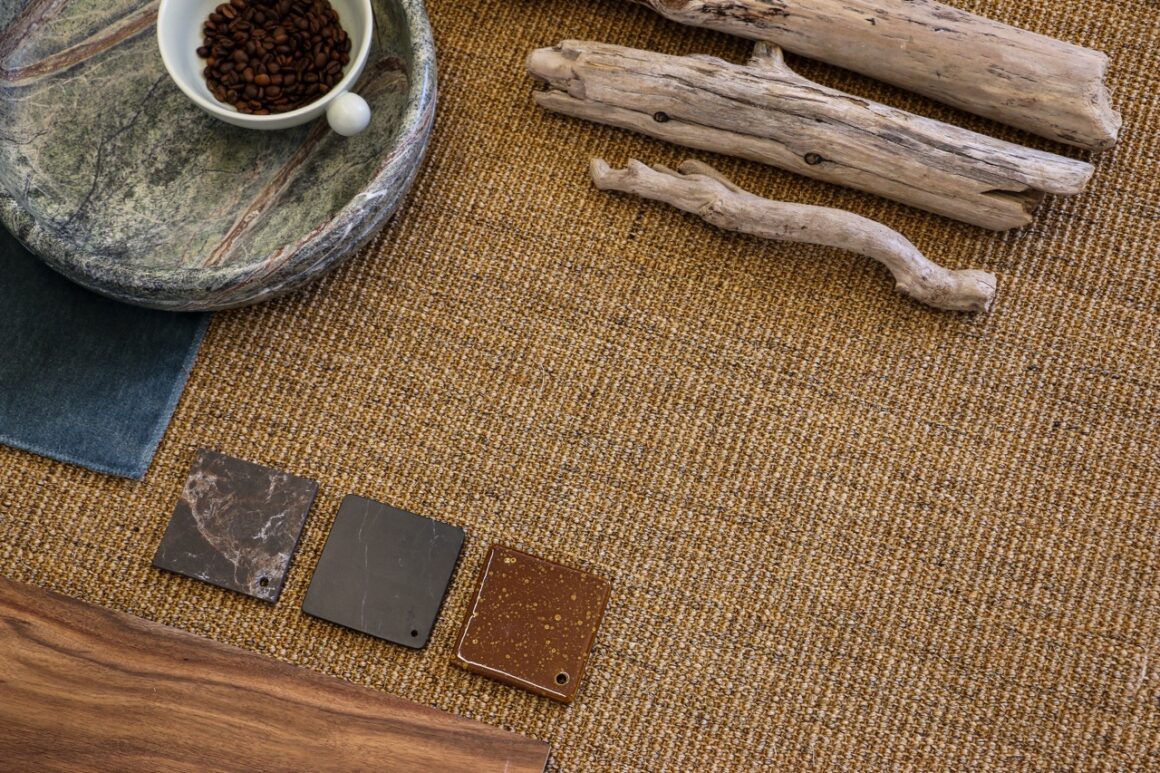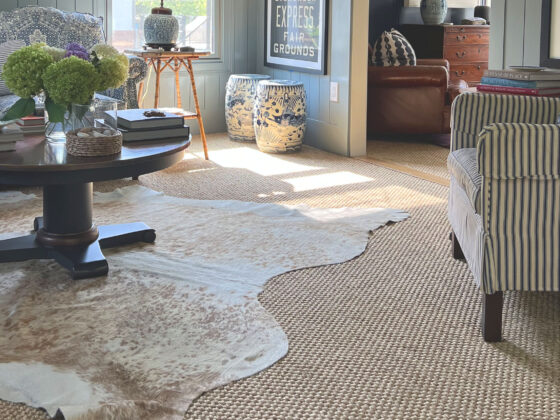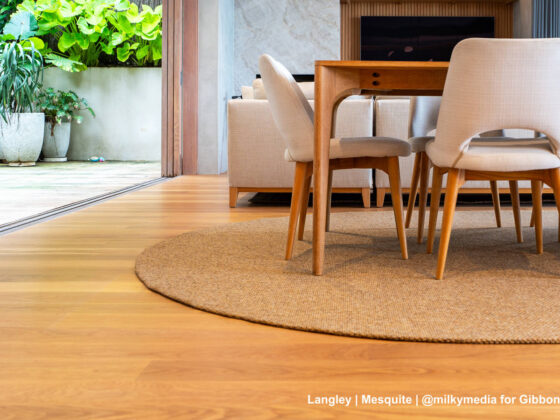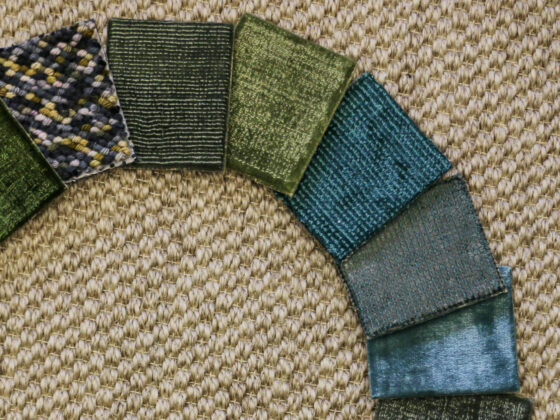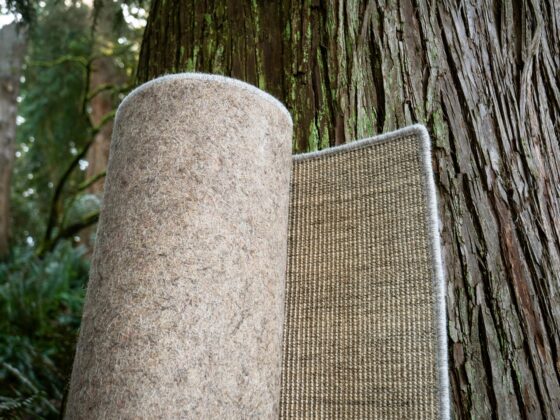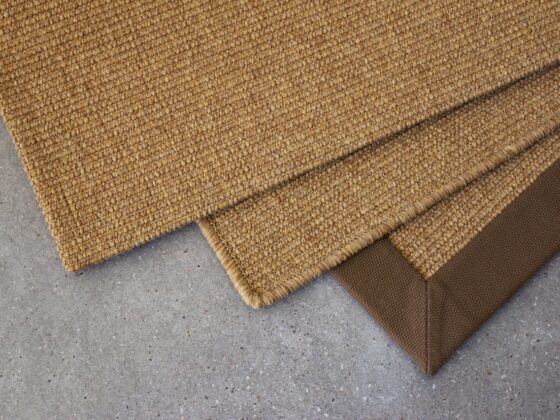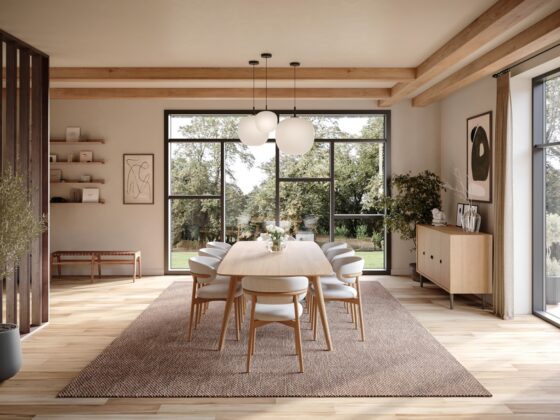Published July 2024 | Updated December 2024
It’s time we address the carbon footprint carpet leaves on the earth and right now carpet leaves a very large footprint. To start, we can talk about where carpet ends up, which is almost always the landfill.
The E.P.A.1 estimates that about 4 billion pounds of carpet end up in landfills each year. This is a staggering amount of waste and the direct result of traditional carpet manufacturing processes that do not account for sustainable disposal practices. The vast majority of carpets and rugs use non-biodegradable synthetic fibers made from petroleum products which contribute to pollution and can not be reused or recycled.
But even most natural fiber carpets like sisal and jute use synthetic backings and adhesives that disqualify them from recycling or composting. As an industry leader in natural floor coverings, Curran knows the way to shrink carpet’s footprint starts with the raw materials and the production process. To meet this urgent need, we created EarthSISAL™, the first 100% biodegradable sisal rug in the US market.
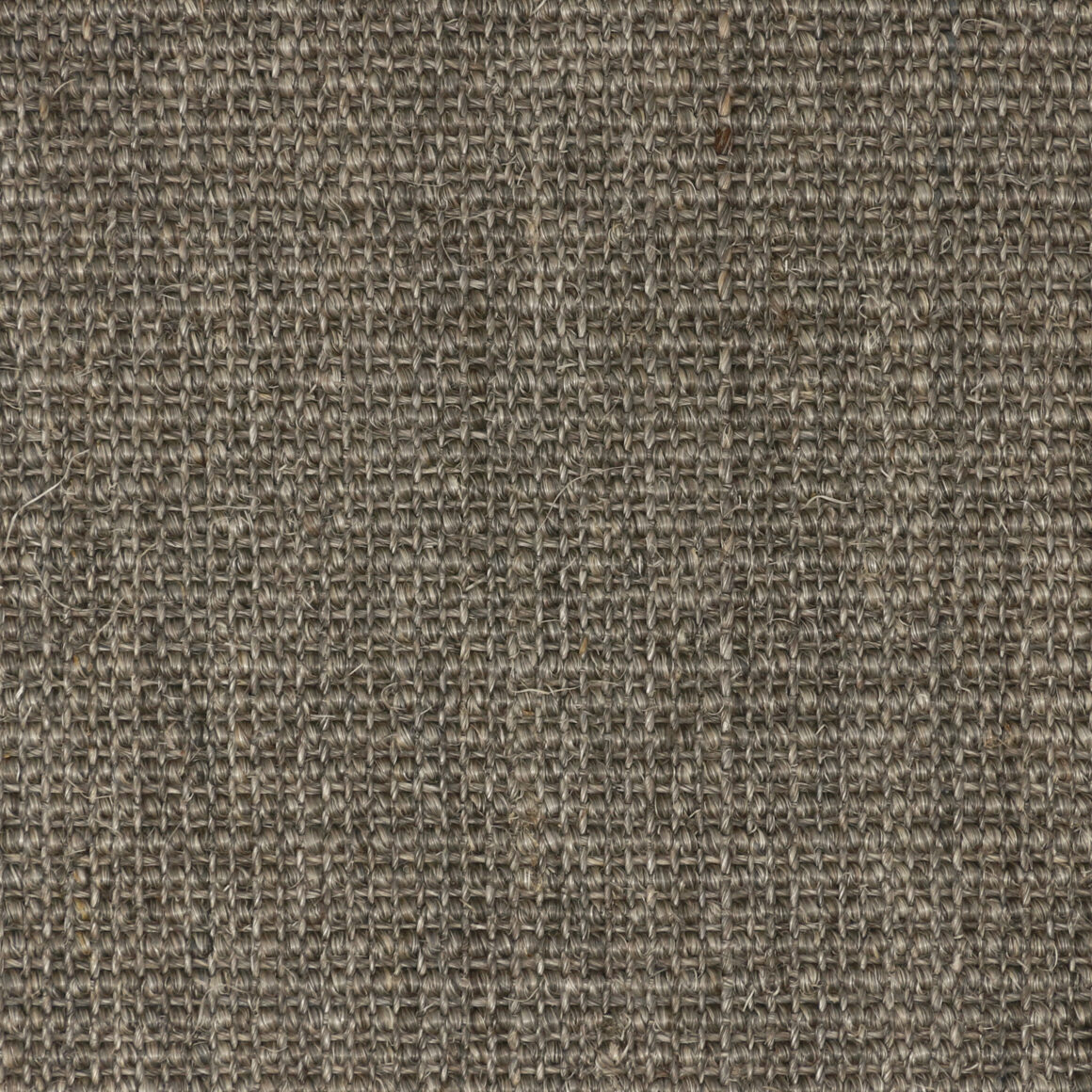
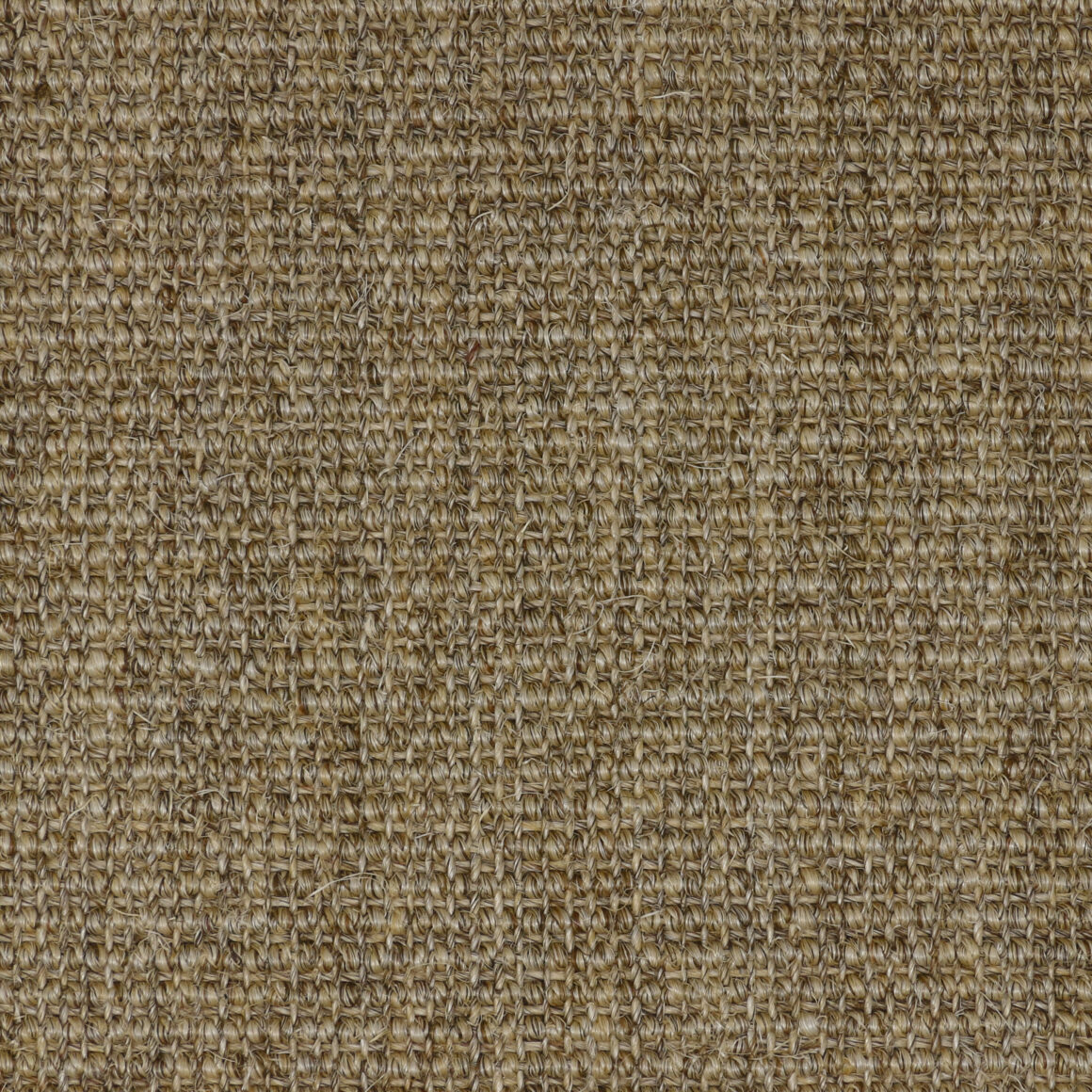
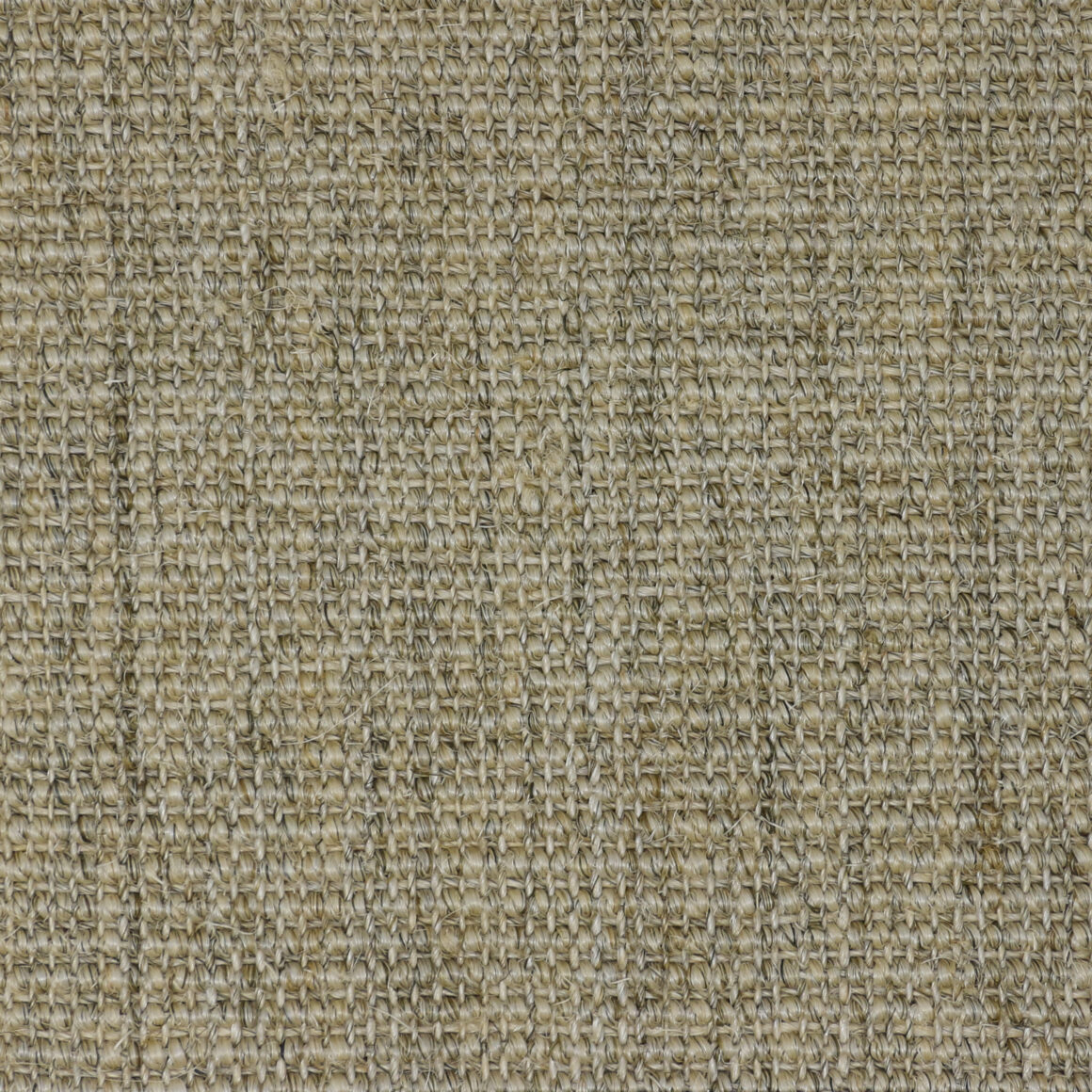
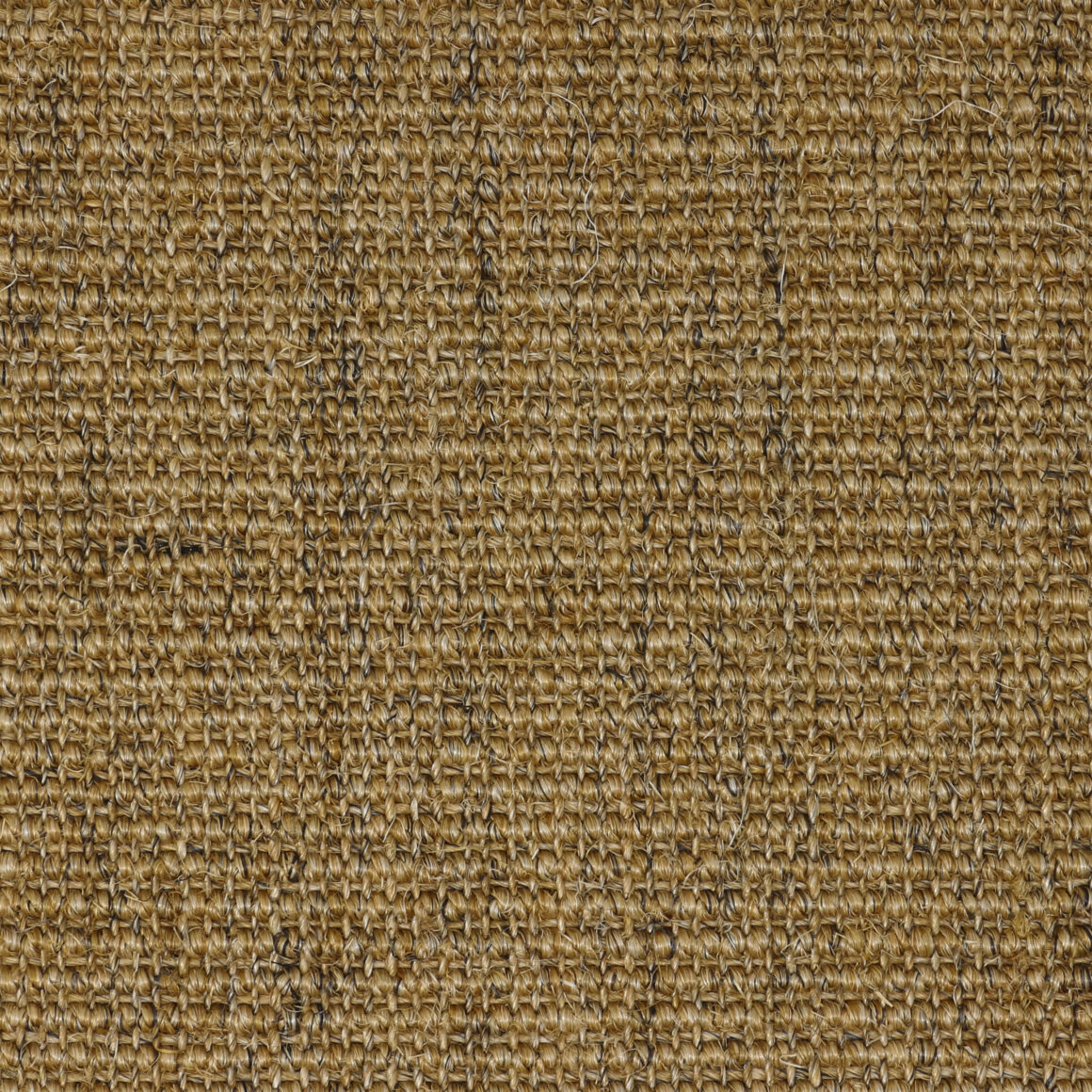
Unlike many sisal rugs and carpets, EarthSISAL™ is completely natural thanks to its recycled natural fleece backing—no latex or adhesives are used. We are proud to introduce this product and explain why EarthSISAL™ is an important step forward for the carpet industry.
What is EarthSISAL™?
EarthSISAL™ is an eco-friendly, biodegradable sisal rug woven with natural sisal and secured with a fleece backing—no latex, no adhesives, no chemicals. Unlike conventional carpets, EarthSISAL™ is biodegradable, sustainable, promotes healthy indoor living and has a smaller environmental footprint. The durability of sisal and its timeless aesthetics combined with built-in, chemical free padding make EarthSISAL™ the perfect rug for eco-minded designs in the home, the office, and retail settings.
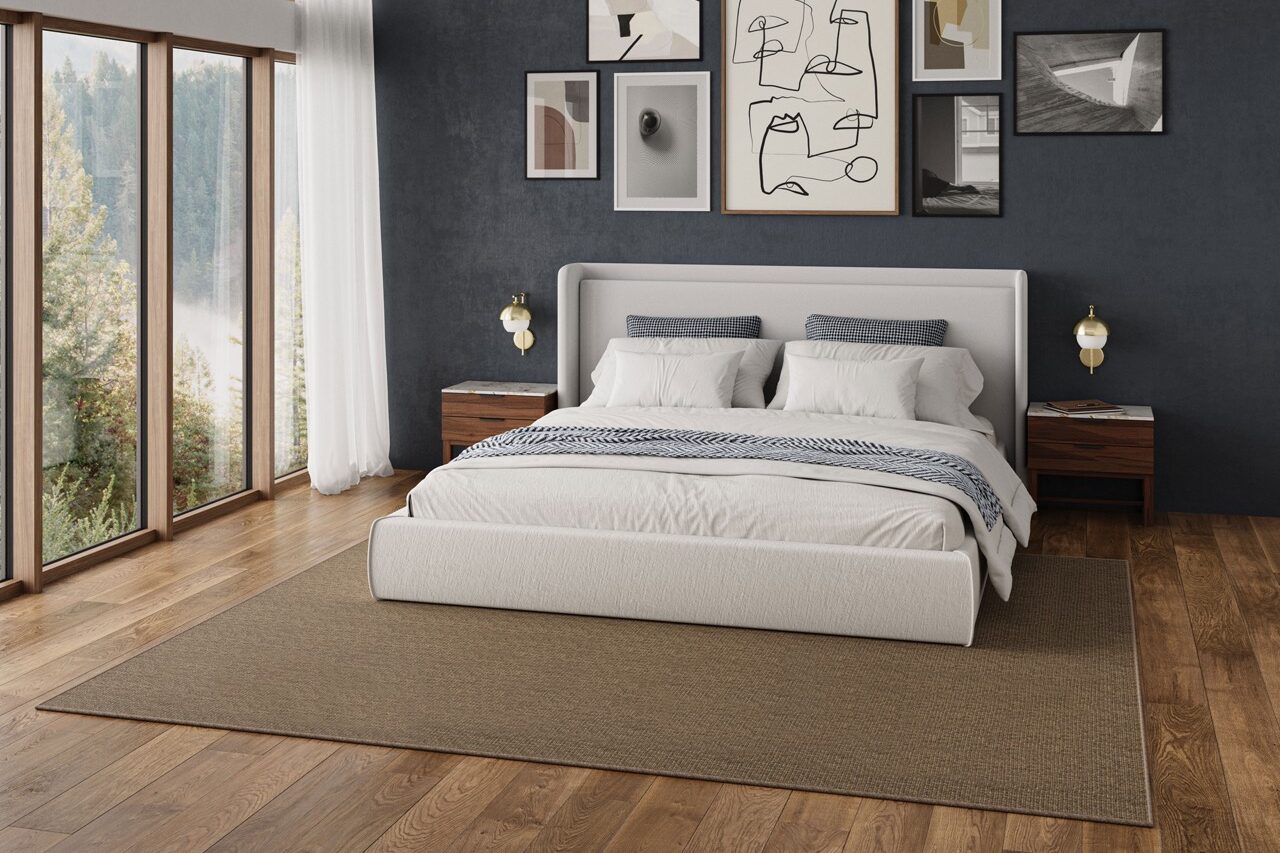
I want a natural, chemical-free rug or carpet. Will EarthSISAL™ work for me?
Unlike traditional carpets, EarthSISAL™ is biodegradable and free from harmful chemicals and adhesives, latex, rubber, and synthetic components. The sisal (sisalana agave) is grown without pesticides or fertilizers in Brazil. Additionally, the fleece backing is completely natural and crafted from recycled fibers. Since EarthSISAL™ is entirely natural, it is a biodegradable sisal rug and a healthy choice for our homes.
What is EarthSISAL™’s fleece backing made from?
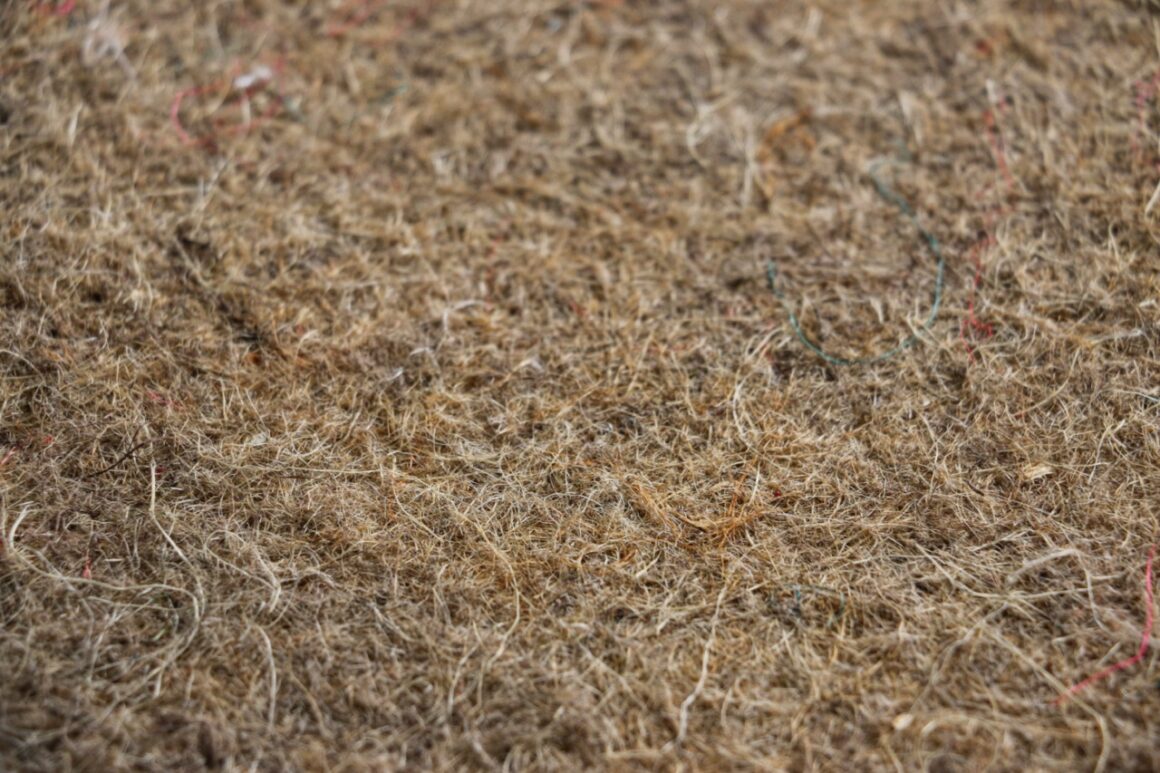
Earthsisal™’s fleece backing creates a built-in rug pad and is made from kenaf, hemp & recycled sisal.
The fleece backing uses kenaf, hemp, and recycled sisal (from wholesale coffee sacks). These three materials are felted together and adhered to the sisal via mechanical needle punching (instead of adhesives). Plus, the fleece backing is a built-in rug pad and adds a layer of cushion. Here are some key points about each of these fibers:
Kenaf (Hibiscus cannabinus)
- Kenaf is highly efficient in absorbing CO2, making it a valuable crop for carbon sequestration. Plus, it requires less water and fewer pesticides compared to traditional crops like cotton. 2 3 4
Hemp (Cannabis sativa)
- Versatile plant that has been cultivated for thousands of years for its strong fibers, seeds, and oil.
- Hemp grows quickly and requires minimal pesticides, making it an eco-friendly crop. It also has deep roots that help prevent soil erosion and improve soil health. 5 6 7
Recycled Sisal from Coffee Bags
- Sisal fibers repurposed from used burlap coffee bags helps reduce waste and extends the lifecycle of the fibers, contributing to a circular economy.
- Sisal is a renewable resource, known for its strength and durability, making it an excellent material for reinforcing the backing of carpets.8
- Using recycled sisal minimizes the need for new raw materials, reducing the environmental impact associated with fiber production.
By incorporating kenaf, hemp, and recycled sisal from coffee bags into the backing of EarthSISAL™ carpets, we reduce our environmental impact and provide durable backing and padding.
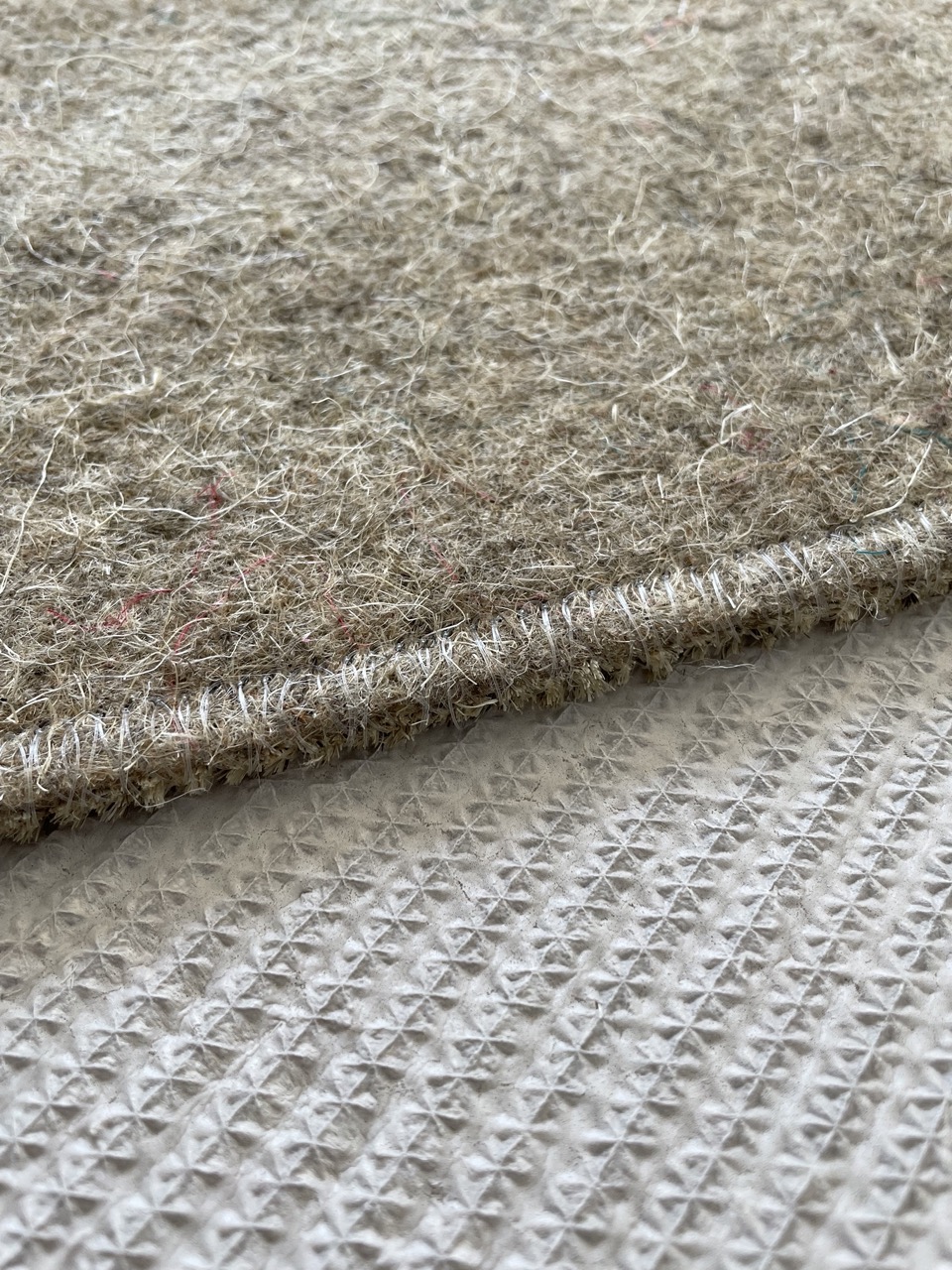
EarthSISAL™’s fleece backing (top) compared to a latex backing (bottom).
EarthSISAL™ & The Environment
I am concerned about indoor air quality. How will an EarthSISAL™ rug or carpet help air quality indoors?
EarthSISAL™ does not have any chemicals and therefore will not negatively impact indoor air quality. Furthermore, one of the unique benefits of natural fiber carpets is their ability to regulate indoor climate and moisture. EarthSISAL™’s felt backing contributes further to a more comfortable and healthy living environment, helping to maintain balanced humidity levels and a purely natural foundation for family, four-legged friends, and guests.
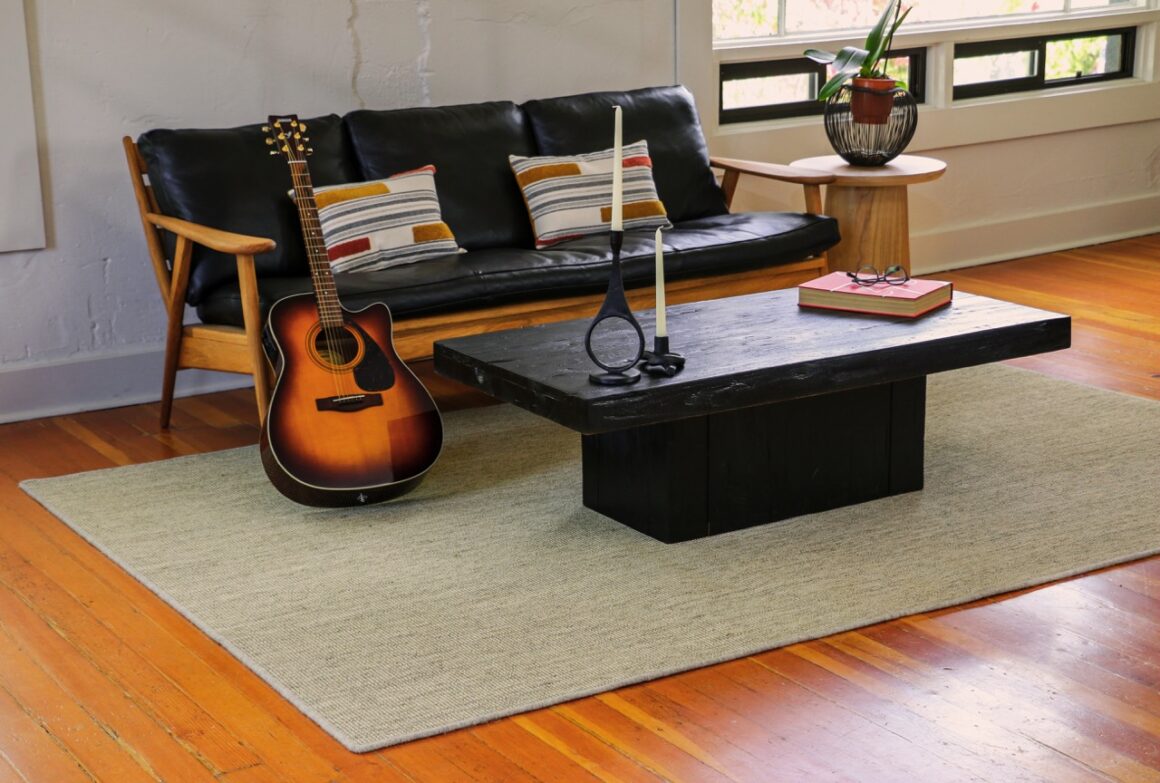
I want sustainably produced products. How sustainable is EarthSISAL™?
Sisal, kenaf, and hemp are renewable resources that do not deplete valuable non-renewable natural resources. The sisal is sourced from a small farmer cooperative in Brazil. By not coating the untreated sisal fabric with latex, we conserve water and avoid chemicals. Furthermore, without the latex backing, the sisal fabric is thinner and compact, allowing more sisal fabric to fit in the container bound for Germany.
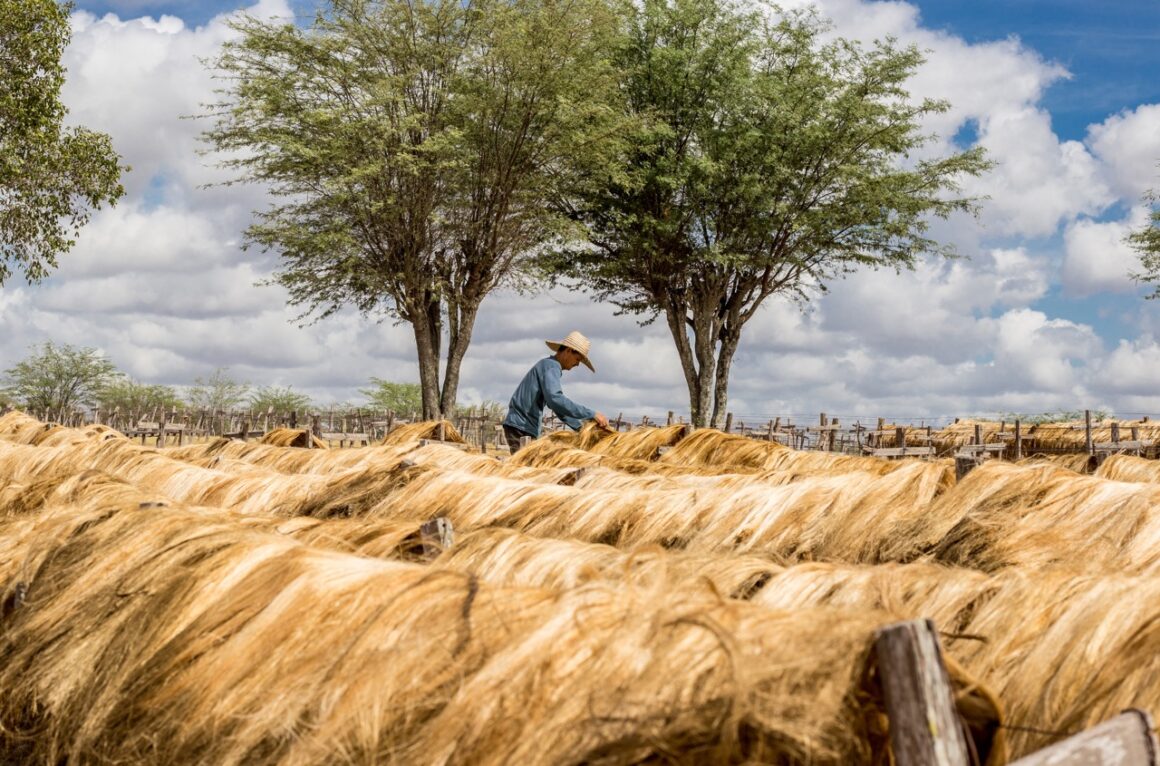
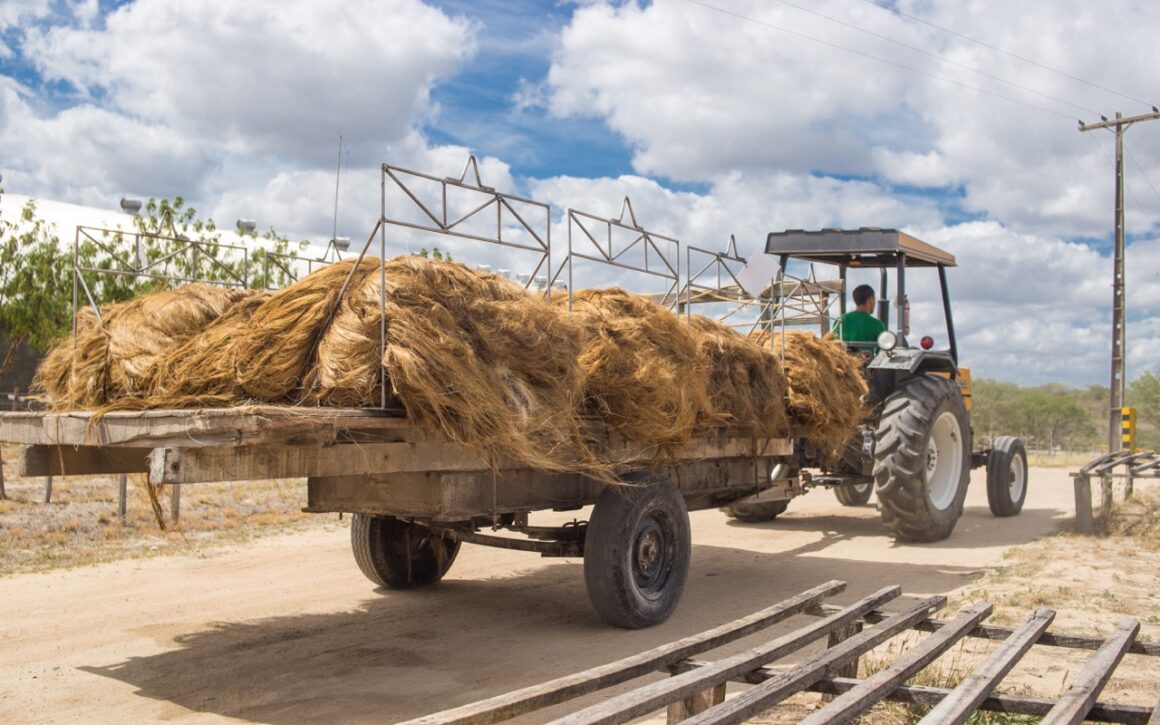
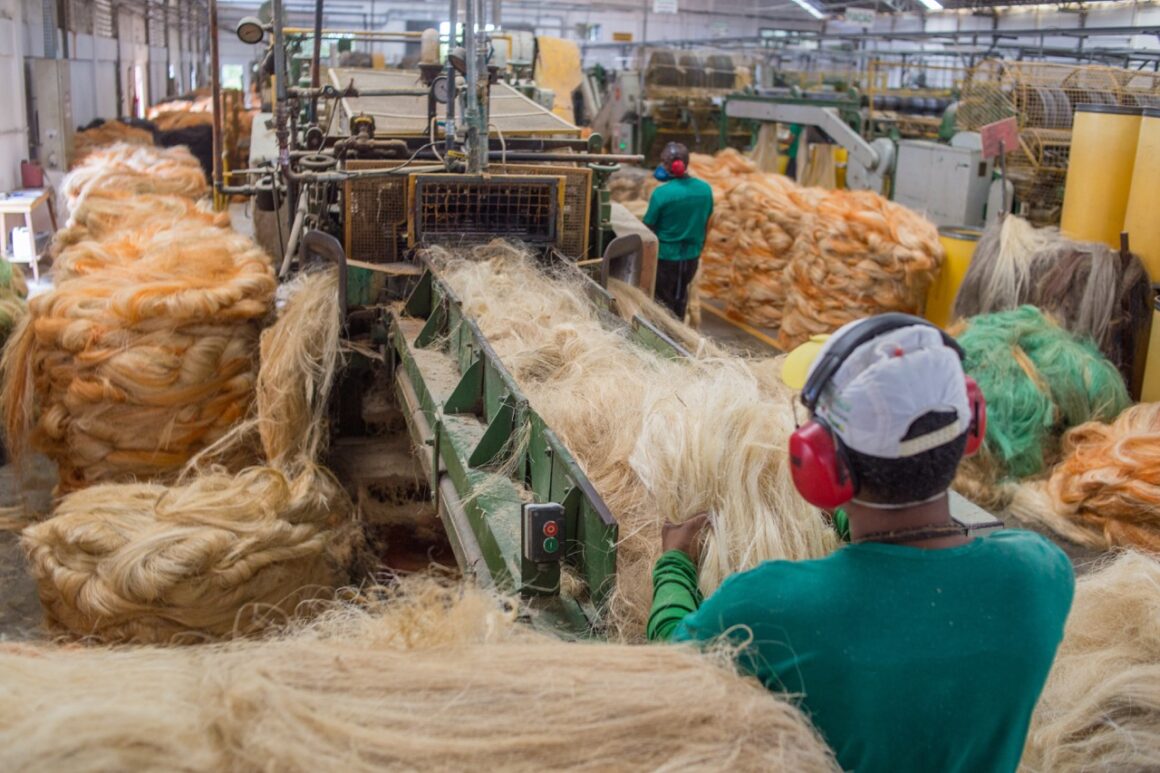
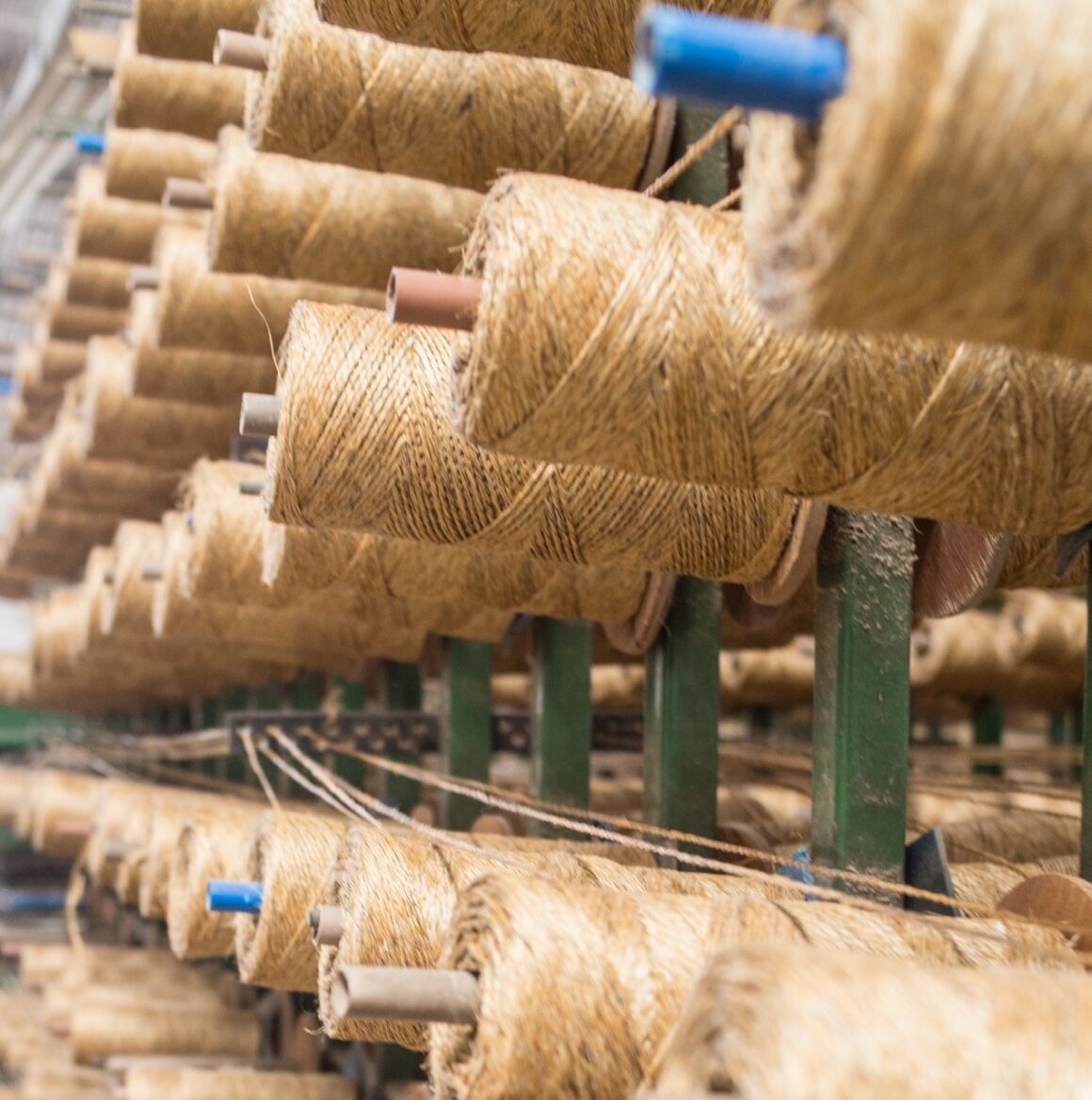
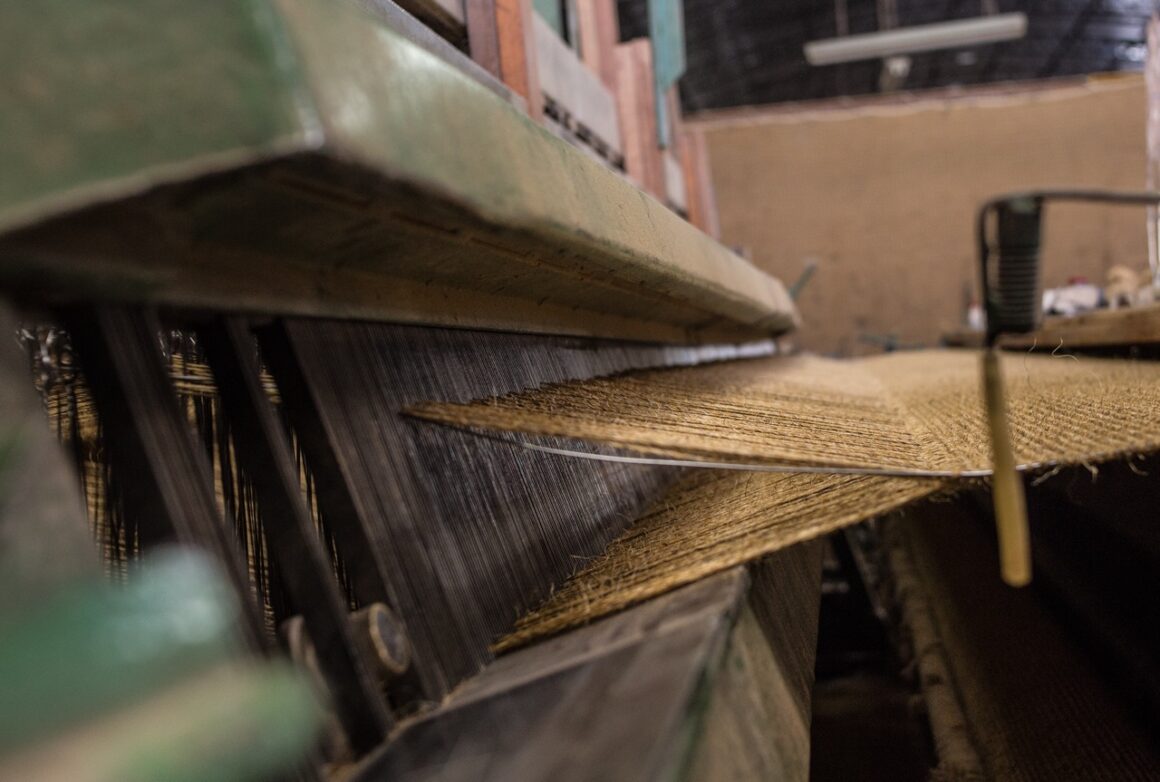
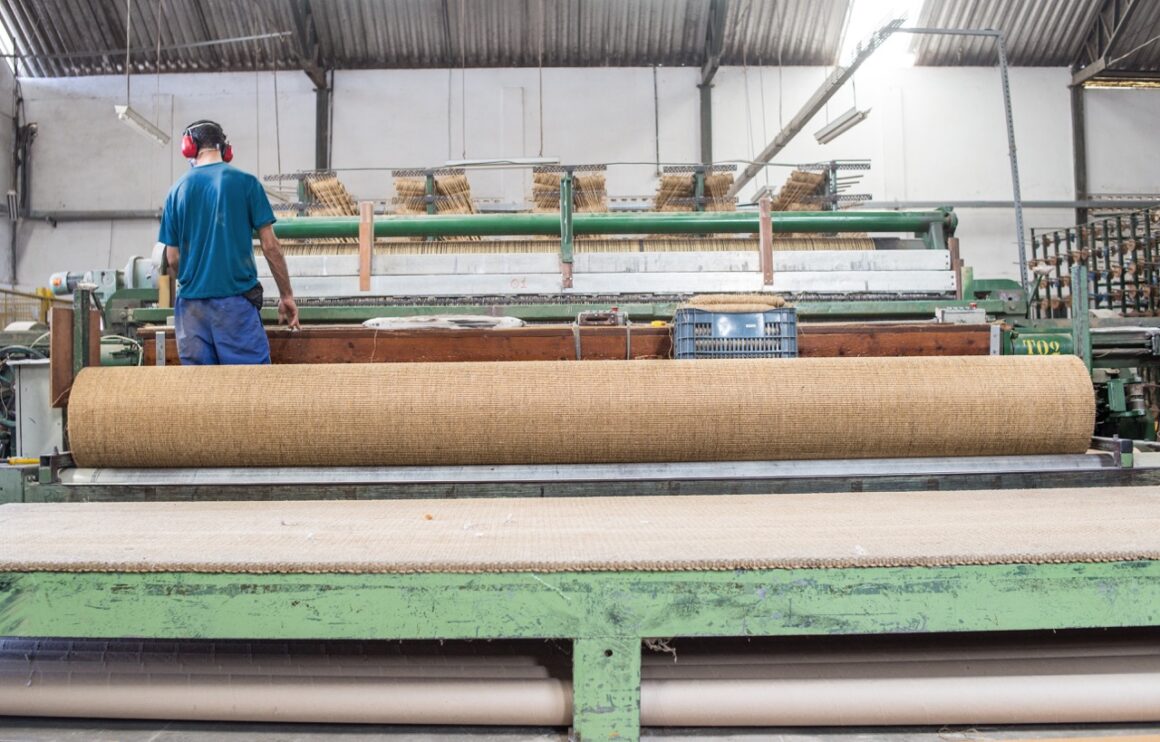
Like all sisal rugs, EarthSISAL™ requires global shipping which creates carbon emissions. But unlike the majority of sisal rugs, EarthSISAL™ is produced in Germany using eco-friendly methods that minimize waste and reduce the carbon footprint. Lastly, the fleece backing is attached to the sisal fabric in Dorsten, Germany with barbed needles (instead of adhesives) in a purely mechanical and environmentally friendly process.
At the end of its lifecycle, how can I dispose of EarthSISAL™ or help it biodegrade?
There are a few ways to ensure minimal environmental impact and enhance the carpet’s biodegradability at the end of its life cycle. If rug composting is not available in your area, there are still several eco-friendly ways to dispose of or repurpose your EarthSISAL™ biodegradable rug:
Repurpose: Cut the rug into smaller pieces to create doormats, runners, or bath mats, or use pieces as bedding or a scratching material for pets.
Cordage: Loose, long sisal strands can be used as rope.
Weed Barrier: Lay pieces of the EarthSISAL™ rug directly on the soil as a weed barrier. Cover it with a thin layer of other mulch materials like bark or leaves. Natural fibers will eventually decompose, adding organic matter to the soil.
Composting: Composting is not available in all areas – check with your municipal agency before adding sisal to your compost. For small yard composters, add small pieces of the sisal rug to a compost pile where it can break down over time, mixed with other compostable materials.
Mulching: While mulching an EarthSISAL™ rug is possible, it requires careful preparation and consideration. Here are the considerations and steps if you choose to mulch your rug:
- Decomposition Time: Sisal is a durable natural fiber and can take a significant amount of time to decompose fully.
- Size and Placement: Large pieces of the rug might not break down effectively and could inhibit water and air movement in the soil.
Steps to Mulch an EarthSISAL™ Rug:
- Clean the Rug: Thoroughly clean the rug to remove any dirt, dust, or possible contaminants that might harm the soil or plants.
- Cut into Small Pieces: Cut the sisal rug into small pieces with sharp sheers. Smaller pieces will decompose more quickly and allow better integration into the soil.
- Mix with Other Organic Matter: Mix the sisal pieces with other organic materials such as leaves, grass clippings, or kitchen scraps. This will help balance the carbon-nitrogen ratio and promote decomposition.
- Layer Properly: Spread the mixture evenly over the garden bed or area you want to mulch. Ensure it’s a thin layer to avoid matting, which can prevent water and air from reaching the soil.
- Monitor Decomposition: Keep an eye on the mulch layer. You may need to turn it periodically to ensure proper aeration and prevent the formation of mold or fungus.
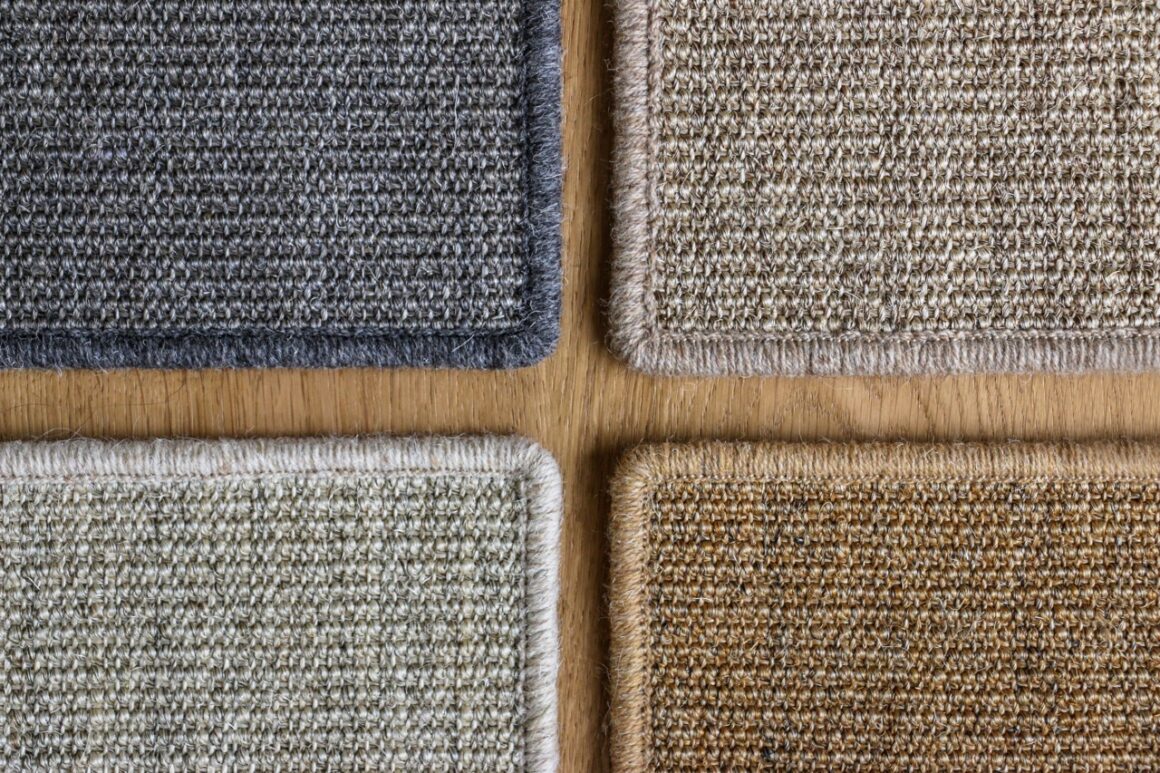
EarthSISAL™ & My Home
I have radiant floor heat. Is it OK to have an EarthSISAL™ rug or carpet on my radiant heated floors?
Yes, the natural fibers let air and heat through. EarthSISAL™ has a tog Rating of 0.71 and is suitable for underfloor heating systems.
I have wood floors. Will the EarthSISAL™ fleece backing stick to my hardwood floor?
Unlike latex, which is known for crumbling and sticking to wood floors, the fleece backing will not stick to hardwood or react with components in the wood finish. Instead, the natural fleece backing adds a layer of cushion to floors and insulates for sound and heat.
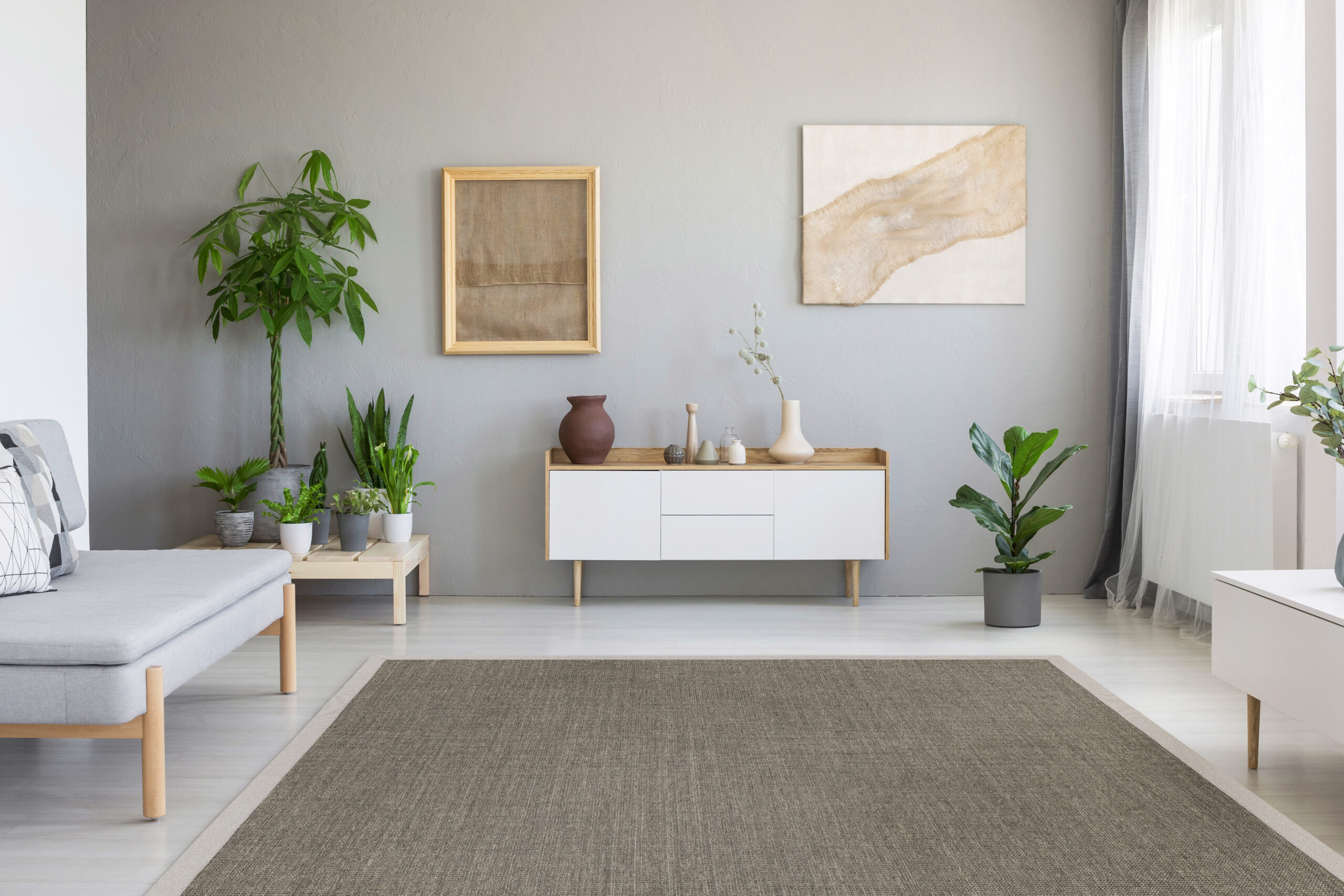
I love the look of sisal. How can I incorporate an EarthSISAL™ rug into my style?
If you love the rustic, organic look of natural fibers, then an EarthSISAL™ flatweave rug or carpet is an ideal addition. (learn more about flatweave rugs here) The classic bouclé structure creates a texture-rich foundation and the warm hues offer a neutral companion to any design scheme. EarthSISAL™’s aesthetic complements traditional interior designs as well as minimalist. Furthermore, we offer customization—you decide the exact dimensions of your rug so it fits your spaces perfectly.
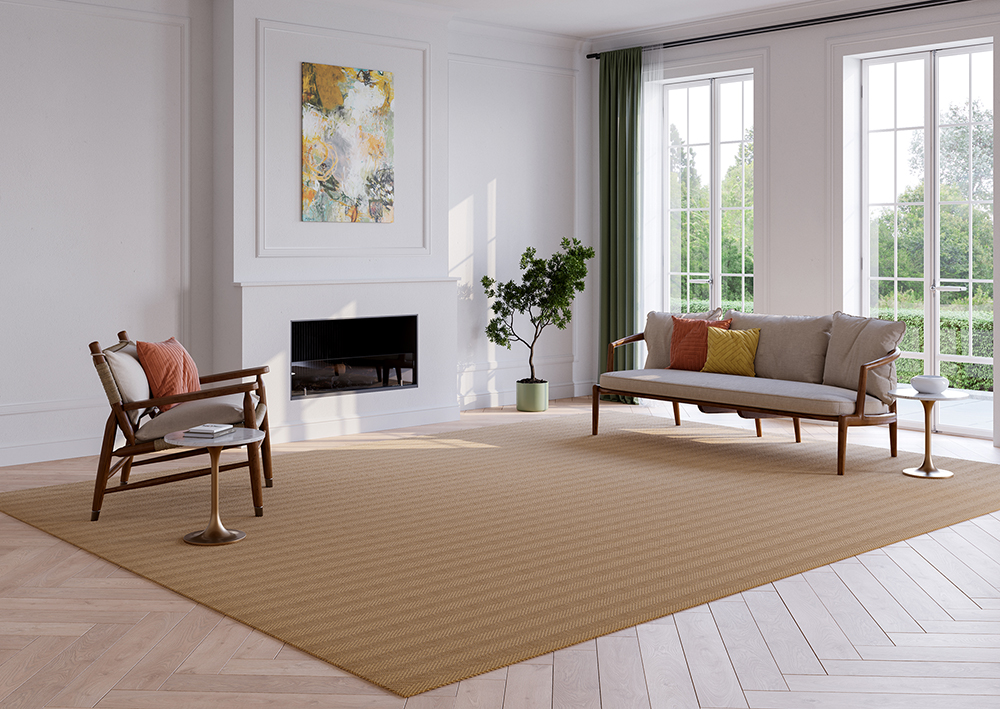
Do you know your design style?
Head over to How to Choose the Right Rug for Every Design Style to find inspiration and the right aesthetic for you.
How does EarthSISAL™ compare to other rug materials?
| EarthSISAL™ Carpet | Sisal Carpet | Synthetic Carpet | |
|---|---|---|---|
| Biodegradable | Yes | No | No |
| Uses Chemical Adhesives | No | Yes | Yes |
| Indoor Air Quality Impact | Improves (No VOCs) | May Emit VOCs (presence of chemicals on fibers, adhesives, or backing) | May Emit VOCs |
| Environmental Impact | Low (eco-friendly materials, renewable) | Low to Moderate (natural material, but may use some chemicals) | High (non-renewable, high environmental impact) |
| Material Source | Natural (Sisal, Kenaf, Hemp) | Natural + Adhesives (Sisal, Latex) | Synthetic (Petroleum-based) |
| Border Material on Rugs | Natural | Natural or Synthetic | Synthetic |
| Durability | High | High | Moderate to High |
| Maintenance | Moderate | Moderate | Low |
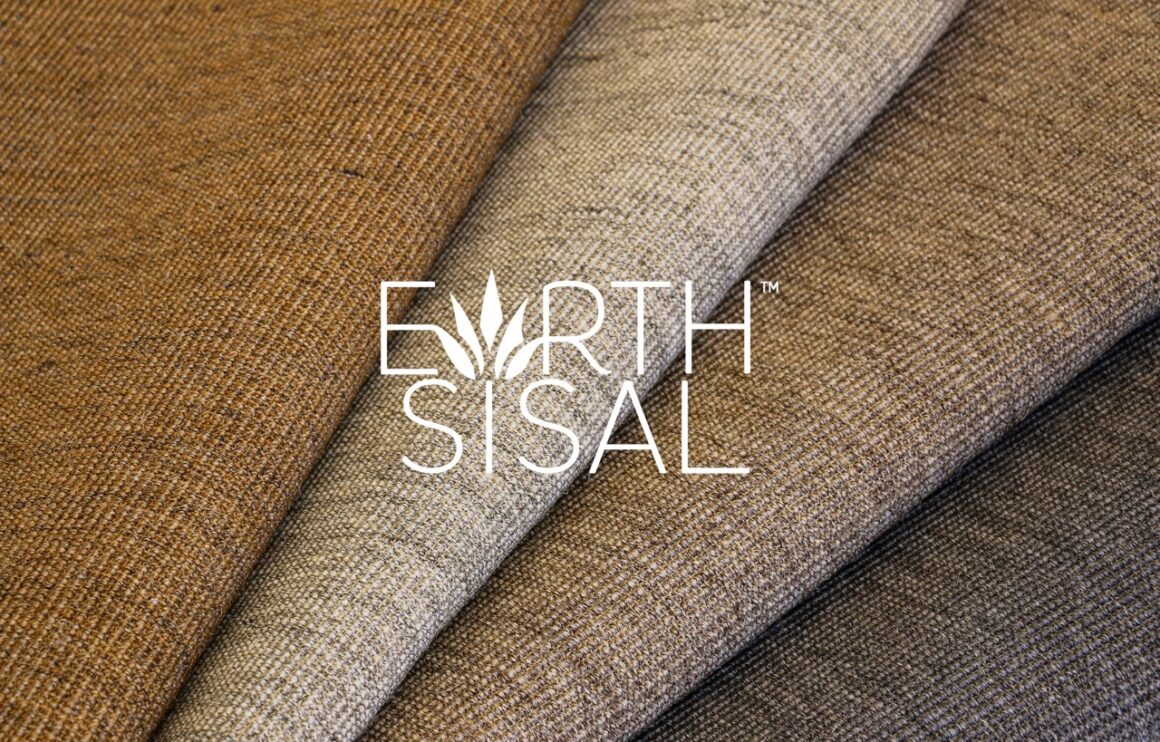
Final Words
EarthSISAL™ biodegradable rugs and carpet exemplify how sustainable living can be seamlessly integrated into everyday life. By choosing EarthSISAL™, you are not only making a statement about your commitment to the environment but also investing in a high-quality, beautiful and healthy flooring solution. It’s one more step towards a more sustainable future, one home at a time.
Sources
- Identifying Greener Carpet ↩︎
- Environmental Aspects of Kenaf Production and Use ↩︎
- Kenaf – the Carbon Dioxide Absorber ↩︎
- Modelling carbon footprint, emission, and sequestration of kenaf cultivation and fiber processing and utilization into automotive components ↩︎
- Hemp: A Sustainable Plant with High Industrial Value in Food Processing ↩︎
- Cannabis/Hemp: Sustainable Uses, Opportunities, and Current Limitations ↩︎
- The Sustainability of Industrial Hemp: A Literature Review of Its Economic, Environmental, and Social Sustainability ↩︎
- Sisal ↩︎

